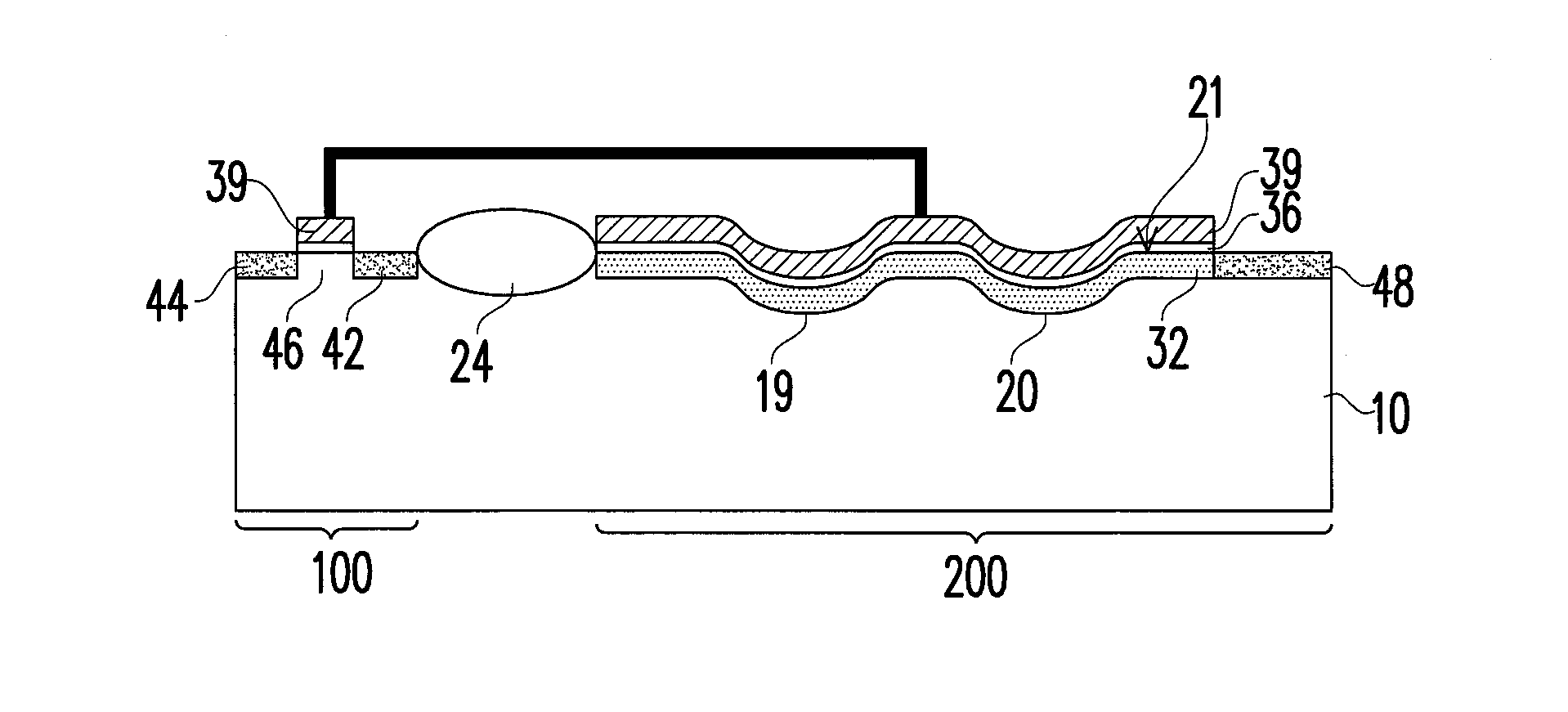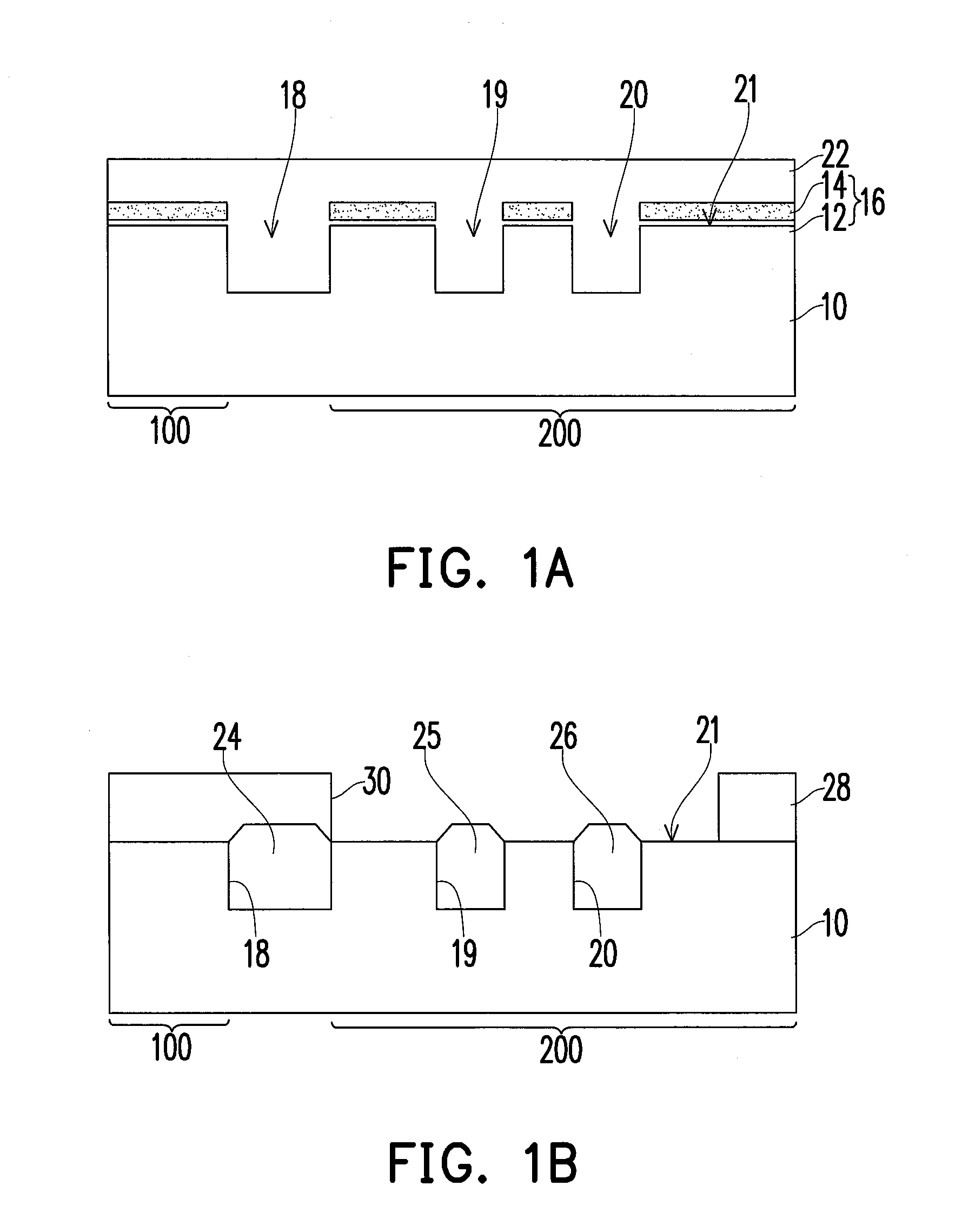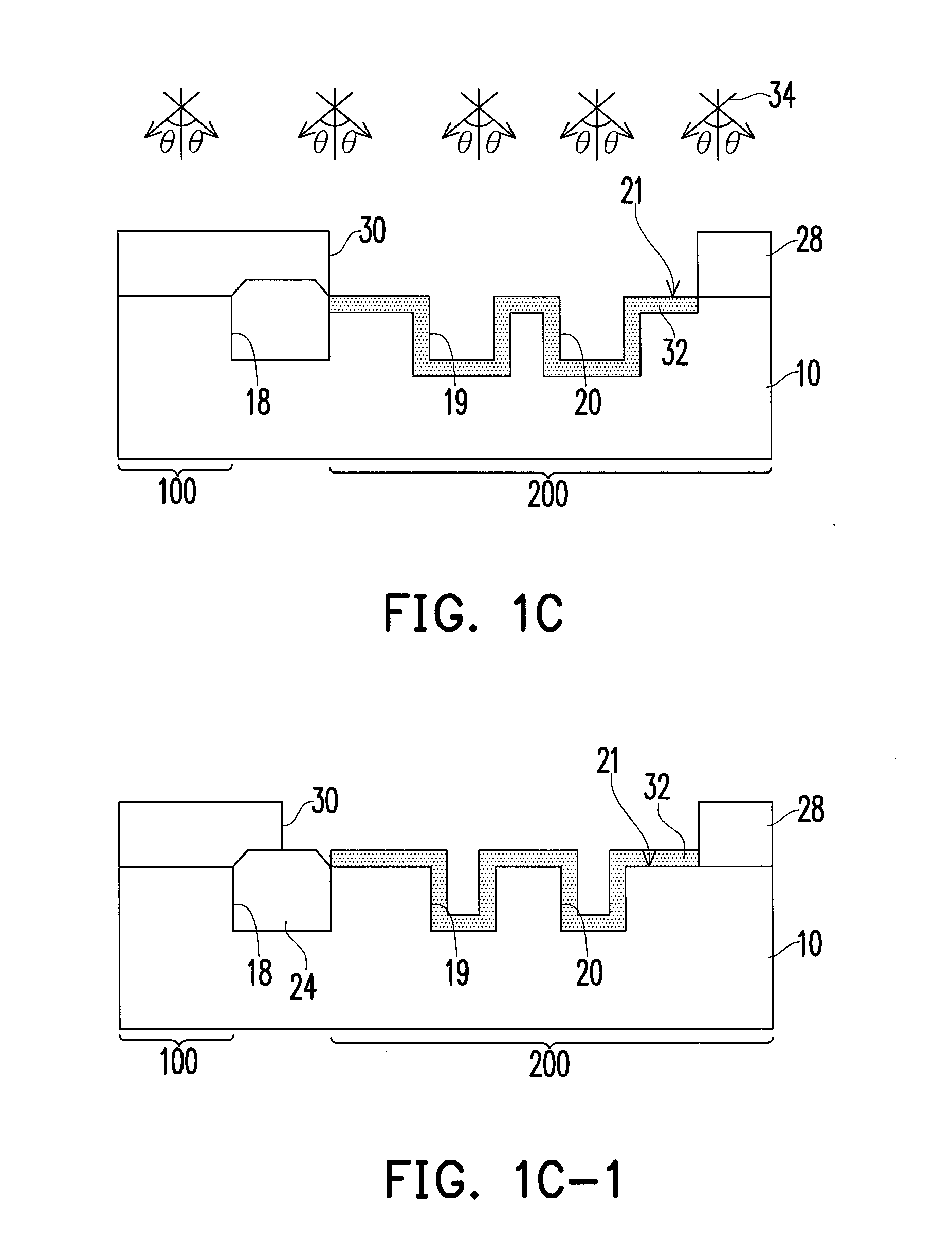Method of fabricating non-volatile memory device
a memory device and non-volatile technology, applied in the field of memory, can solve the problems of continuously reducing the size of the device and reducing the stored capacitance of the memory device accordingly, and achieve the effect of improving the coupling efficiency of the memory device and simple and cheap processes
- Summary
- Abstract
- Description
- Claims
- Application Information
AI Technical Summary
Benefits of technology
Problems solved by technology
Method used
Image
Examples
Embodiment Construction
[0026]FIG. 1E is a schematic cross-sectional view of a non-volatile memory device according to one embodiment of the present invention. FIG. 2E is a schematic cross-sectional view of a non-volatile memory device according to another embodiment of the present invention.
[0027]Referring to FIGS. 1E and 2E, a non-volatile memory device of an embodiment of the invention includes a substrate 10, a dielectric layer 36, a floating gate 39, source and drain regions 42 and 44, a channel region 46, and a doped layer 32. The substrate 10 is, for example, a bulk substrate such as a silicon substrate or a silicon-on-insulator (SOI) substrate. The substrate 10 includes a first region 100 and a second region 200. The first region 100 is separated from the second region 200 by an isolation structure 24. The isolation structure 24 is, for example, a shallow trench isolation structure or a field oxide layer. The substrate 10 has a flat surface in the first region 100, and the substrate 10 has a plural...
PUM
 Login to View More
Login to View More Abstract
Description
Claims
Application Information
 Login to View More
Login to View More - R&D
- Intellectual Property
- Life Sciences
- Materials
- Tech Scout
- Unparalleled Data Quality
- Higher Quality Content
- 60% Fewer Hallucinations
Browse by: Latest US Patents, China's latest patents, Technical Efficacy Thesaurus, Application Domain, Technology Topic, Popular Technical Reports.
© 2025 PatSnap. All rights reserved.Legal|Privacy policy|Modern Slavery Act Transparency Statement|Sitemap|About US| Contact US: help@patsnap.com



